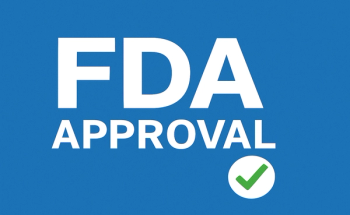
Study Summary: Estimating the Value-Based Price Range of Erenumab for Migraine Prevention
This health economic analysis predicted that, compared with use of supportive care, erenumab treatment will reduce the direct and indirect costs associated with migraine and increase quality-adjusted life-years for patients who have previously experienced treatment failure with at least 1 preventive migraine treatment.
Background
Migraine is a common neurological disorder marked by headache and a host of other physical symptoms that may be temporarily disabling. Episodic migraine (EM) and chronic migraine (CM) are 2 subsets of the broader spectrum of migraine disorder, and they are defined by the total quantity of migraine and headache days experienced by the patient every 28 days (monthly migraine days [MMD]; monthly headache days).1
EM affects more than 90% of individuals with migraine in the United States and is defined by headaches occurring on fewer than 15 days per month. In contrast, CM affects a much smaller number of patients with migraine in the United States—5% to 8%—and is defined by headaches occurring on 15 or more days per month.1
The cornerstone of migraine prevention has been medications such as topiramate, propranolol, and amitriptyline. However, these drugs are not migraine-specific, and patients taking them often develop intolerable adverse effects that hinder adherence to therapy. OnabotulinumtoxinA is FDA-approved for migraine prevention, but its use is limited to patients with CM. At present, there is no standard of care or published guidelines to assist practitioners in the treatment of patients who have tried preventive therapy and experienced treatment failure. These patients and their providers await novel therapies to fill this gap in migraine care.1
Erenumab has emerged as a candidate for preventive migraine treatment in this patient population. Erenumab is a fully human monoclonal antibody designed to block the calcitonin gene—related peptide (CGRP) receptor, which plays a pivotal role in the pathophysiology of migraine. In key clinical trials, erenumab has shown efficacy in patients with both EM and CM who have tried and failed other preventive migraine therapies.1
Erenumab was approved by the FDA in May 2018, and as of the time of publication of the analysis by Lipton et al, pricing has not yet been made available, meaning that the drug’s cost-effectiveness has not yet been directly assessed. Lipton and colleagues, therefore, developed an economic model as an alternative method of evaluating the health outcomes (eg, MMD frequency and health-related quality of life [HRQOL]) and economic outcomes (eg, value-based price [VBP]) associated with using erenumab in patients with EM or CM who had previously experienced treatment failure with at least 1 preventive migraine treatment.1
VBP assesses the top price at which a medication or therapy would still be considered cost-effective when measured against an equivalent treatment. The VBP of erenumab was estimated based on its associated cost reduction and quality-adjusted life-years (QALYs) gained.1
Study Design
In this study, the researchers compared the outcomes associated with receiving either erenumab 140 mg injected every 4 weeks or supportive care (SC) without preventive treatment. Using data from trials in patients with EM and CM, the researchers conducted an economic analysis using a Markov model. In this model, they defined patients’ health states as being “on preventive treatment,” “off preventive treatment,” or “dead” (and thus incurring no costs or health outcomes). Only data from patients who had previously experienced treatment failure with at least 1 preventive migraine treatment were included.1
Researchers used this model to predict and compare MMD frequency, healthcare costs, and HRQOL outcomes in patients with EM or CM who were either taking erenumab or receiving SC to prevent migraine. These outcomes were estimated across a projected 10-year time span.1
Results
Using a base case analysis, this model estimated that patients receiving erenumab would experience 144 fewer migraine days over 10 years than those receiving SC, with an average treatment duration of 2.01 years (
In addition, migraine patients receiving only SC were estimated to have a discounted cost of $129,889 over 10 years (
The model estimated that the VBP for erenumab would range from $14,238 to $23,998 per year.
The researchers acknowledged several limitations of this study, including the constraints of available data. They emphasized that the model was based on the erenumab treatment protocols used in the clinical trials prior to the drug’s approval by the FDA. The study authors recognized that when erenumab enters clinical practice, clinicians and patients may alter treatment plans in real-world situations and according to patients’ individualized treatment objectives. In addition, this analysis relied on MMD as the sole measure of disease while excluding other features, such as migraine duration and severity. This model also assumed that following treatment discontinuation, patients remain untreated.1
Conclusions
This health economic analysis predicted that, compared with use of SC, erenumab treatment will reduce the direct and indirect costs associated with migraine and increase QALYs for patients who have previously experienced treatment failure with at least 1 preventive migraine treatment. The analysis identified the range of prices across which erenumab would be considered valuable as a preventive migraine treatment. In addition to showing the potential healthcare use—associated cost savings of erenumab, the study also highlighted the drug’s potential societal benefits in terms of improved productivity. Lipton and colleagues noted that after erenumab launches, further analyses should be performed to expand upon the results of this study and to better define the clinical and economic value of the drug.1
Reference
1. Lipton RB, Brennan A, Palmer S, et al. Estimating the clinical effectiveness and value-based price range of erenumab for the prevention of migraine in patients with prior treatment failures: a US societal perspective. [published online April 3, 2018]. J Med Econ. doi: 10.1080/13696998.2018.1457533.
Newsletter
Stay ahead of policy, cost, and value—subscribe to AJMC for expert insights at the intersection of clinical care and health economics.





























































